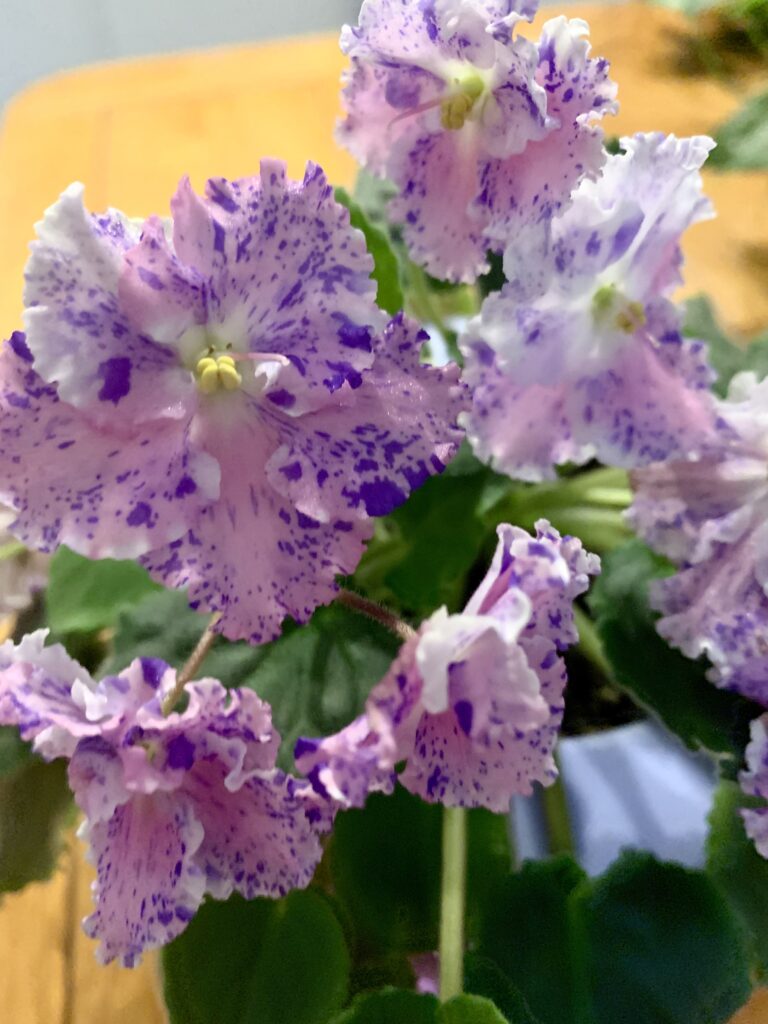
Growing African violets (Saintpaulia) can be a rewarding experience for both novice and experienced gardeners. These charming, compact plants are known for their beautiful, velvety leaves and vibrant blooms. With the right care, African violets can thrive, providing colorful flowers year-round. Here’s a comprehensive guide to African Violet plant care.
Choosing the Best Pot
Selecting the right pot is crucial for the health of your African violet. These plants prefer small, shallow pots that allow their roots to spread horizontally. Opt for pots made of plastic or ceramic, as they retain moisture better than clay pots, which can dry out too quickly. Ensure the pot has drainage holes to prevent waterlogging, which can lead to root rot.
Ideal Soil Type
African violets require a well-draining, light, and airy soil mix. Standard garden soil is too dense and can suffocate the roots. A specialized African violet potting mix, available at most garden centers, is ideal. This mix typically contains peat moss, vermiculite, and perlite, providing the right balance of moisture retention and aeration.
Planting Your African Violet
When planting an African violet, fill the pot with the soil mix, leaving enough space for the root ball. Gently remove the plant from its current pot, being careful not to damage the roots. Place the plant in the new pot, spreading the roots out gently. Fill in around the roots with additional soil mix, pressing lightly to eliminate air pockets. Water the plant lightly after planting to settle the soil.
Watering Requirements
Proper watering is essential for African violets. They prefer consistently moist but not waterlogged soil. Water the plant when the top inch of soil feels dry to the touch. Bottom watering is recommended to avoid getting water on the leaves, which can cause spots and rot. Place the pot in a saucer filled with water and allow the plant to absorb the water through the drainage holes. After about 30 minutes, remove any excess water from the saucer.
Light Requirements
African violets thrive in bright, indirect light. Place them near a north or east-facing window where they can receive plenty of light without direct sunlight, which can scorch the leaves. If natural light is insufficient, consider using fluorescent or LED grow lights. Position the grow lights about 12-15 inches above the plants and keep them on for 12-14 hours a day. Ensure the lights are not too close, as excessive light can cause leaf burn.
Repotting African Violets
Repotting is necessary when the plant outgrows its current pot or the soil becomes compacted. Typically, African violets should be repotted every 6-12 months. To repot, gently remove the plant from its pot and shake off excess soil. Trim any dead or damaged roots and place the plant in a slightly larger pot with fresh soil mix. Water lightly after repotting.
Fertilizing African Violets
Regular fertilization promotes healthy growth and vibrant blooms. Use a balanced, water-soluble fertilizer specifically formulated for African violets. Dilute the fertilizer to half the recommended strength and apply it every 4-6 weeks. Over-fertilization can harm the plant, so it’s better to err on the side of caution.
Propagating African Violets
Propagating African violets is a rewarding way to expand your collection. The most common method is through leaf cuttings. Start by selecting a healthy leaf with a long stem from the parent plant. Cut the stem at a 45-degree angle, leaving about 1 to 1.5 inches. Insert the stem into moist African violet potting mix in a small pot, and cover it with a clear plastic bag or propagation dome to maintain high humidity. Place the pot in bright, indirect light and keep the soil consistently damp. Within 4-8 weeks, roots will begin to form, followed by small plantlets. Once the plantlets have several leaves and are large enough to handle, separate them from the parent leaf and pot them individually. Continue to provide proper care, including light, water, and humidity, and soon you’ll have new, thriving African violets.
Additional Tips
- Humidity: African violets prefer a humid environment. If your home is dry, increase humidity by placing the pot on a tray filled with pebbles and water, ensuring the pot is not in direct contact with the water. You can use this small inexpensive hygrometer to measure humidity levels.
- Temperature: Maintain a consistent temperature between 65-75°F (18-24°C). Avoid drafts and sudden temperature changes, which can stress the plant.
- Pruning: Remove dead or yellowing leaves and spent blooms regularly to encourage new growth and maintain the plant’s appearance.
Happy AV Gardening!
By following these guidelines, you can successfully grow and care for African violets, enjoying their beautiful flowers and lush foliage. With proper attention to their specific needs, African violets can thrive and bring a touch of natural beauty to your indoor spaces.
Please be sure to check out my Gardening Blog Post Page for more tips on all types of gardening. Including Seed Starting, Orchids, Water Gardening, Coldframe Gardening, Indoor Bulb Gardening, Hydroponics, Container Gardening, Mums, Herbs, African Violets, planting Bulbs, Flower Gardening, Vegetable and Fruit Gardening, Indoor Houseplants of all kinds, Cactus, Succulents, Hanging plants, Deer resistant plants and even Bird, Bee, Butterfly and Hummingbird Gardens!
